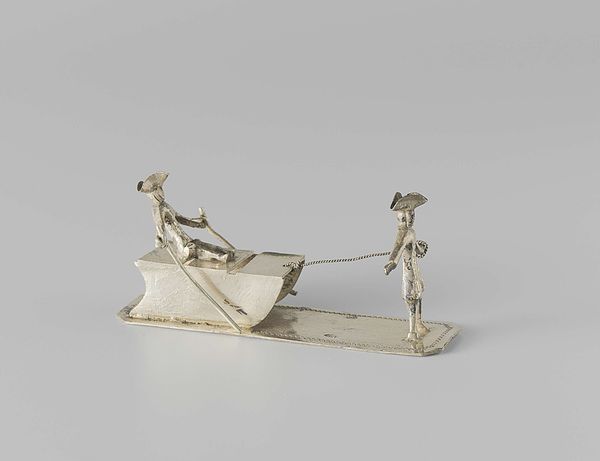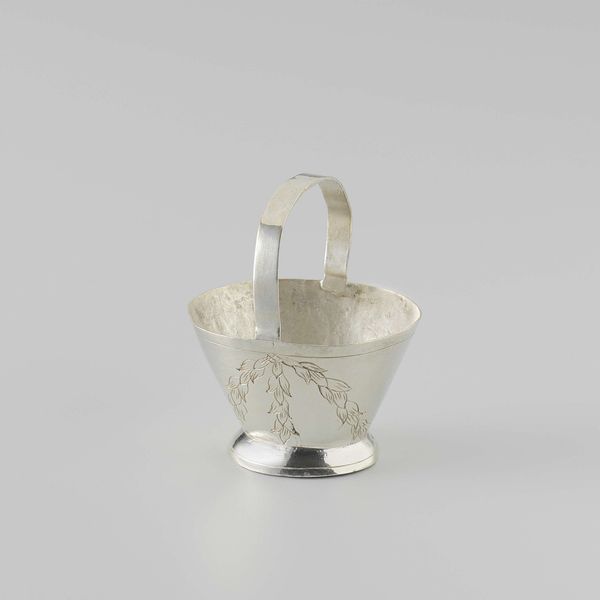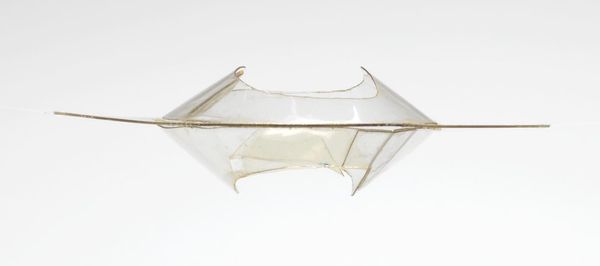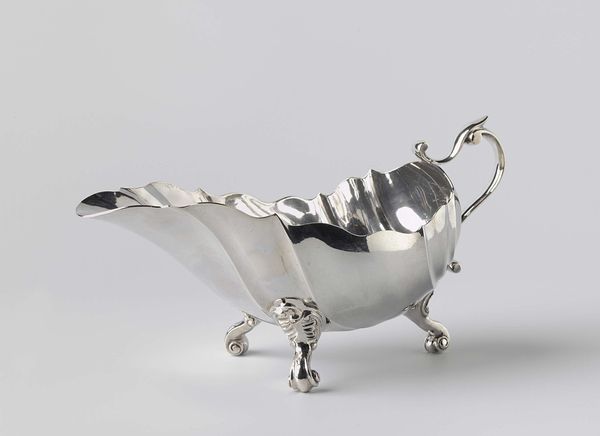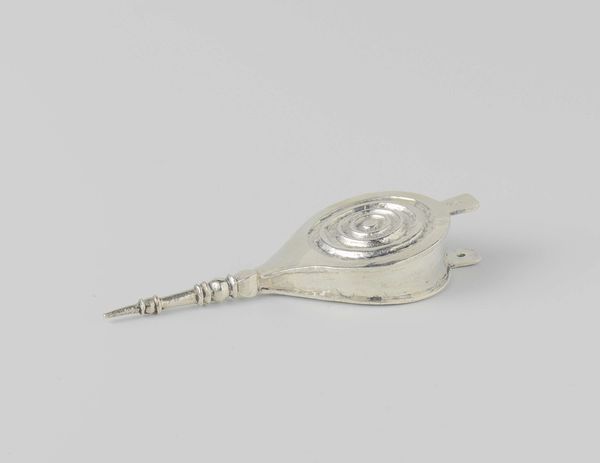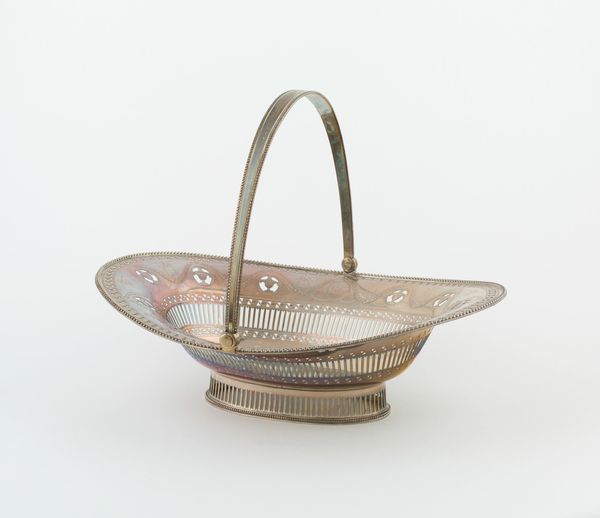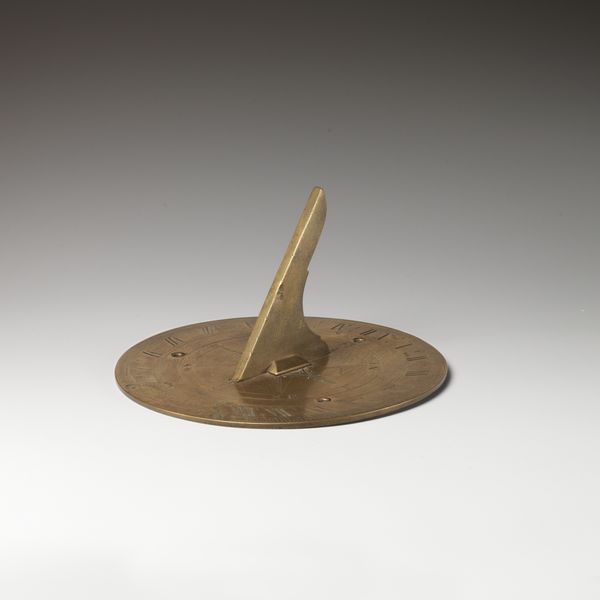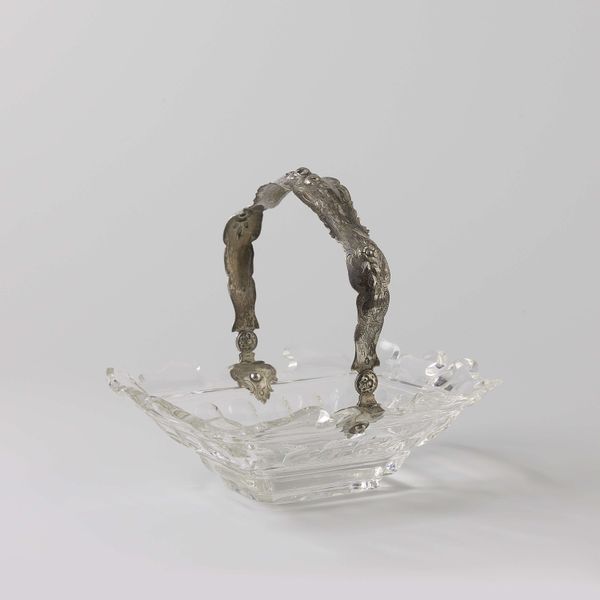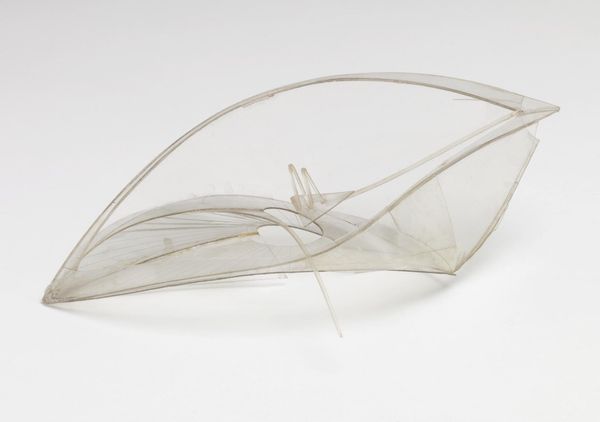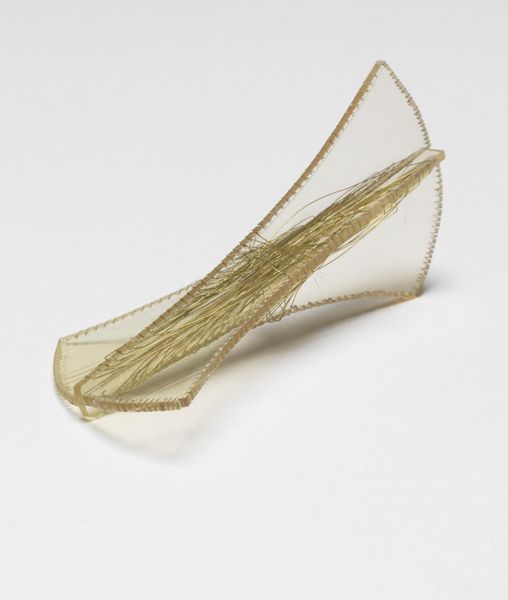
Dimensions: height 11.0 cm, length 21.4 cm, width 9.5 cm, weight 618 gr
Copyright: Rijks Museum: Open Domain
Editor: Here we have a fascinating piece, "Stijgbeugel in de vorm van een muiltje," or "Stirrup in the shape of a slipper," made in 1781. It’s a metal carving. What initially strikes me is its intriguing form; how do you interpret its symbolic shape within a formalist framework? Curator: The immediate observation centres on its striking convergence of disparate forms: the utilitarian stirrup and the ornate slipper. Note the crispness of the metallic medium allows for precise carving, effectively capturing the Baroque impulse toward dynamism, visible in the suggestion of movement implied by the slipper's elevated heel and upward-curving lines. It teases a semiotic reading, would you agree, the contrast elevating an otherwise banal object to art? Editor: Absolutely! The contrast is palpable, and the execution is impeccable. The artist certainly showcases skill. But the object’s functionality as a stirrup seems almost negated by its refined shape, wouldn't you agree? Does the fusion amplify its aesthetic or practical value? Curator: Its primary value lies not in practical application, but rather as a complex configuration of volume, texture, and proportion. Examine the sinuous curves echoed in both the stirrup and the slipper elements; their interrelation underscores the artist’s deliberate exploration of form. Are we not compelled to deconstruct its layers of symbolism that the artist employed? Editor: I see your point. The artist really forces us to analyse form and technique rather than historical context. I’ll certainly remember to view such pieces through a formal lens. Curator: Indeed. Observing, deconstructing and concluding from forms gives an unparalleled level of observation.
Comments
No comments
Be the first to comment and join the conversation on the ultimate creative platform.
